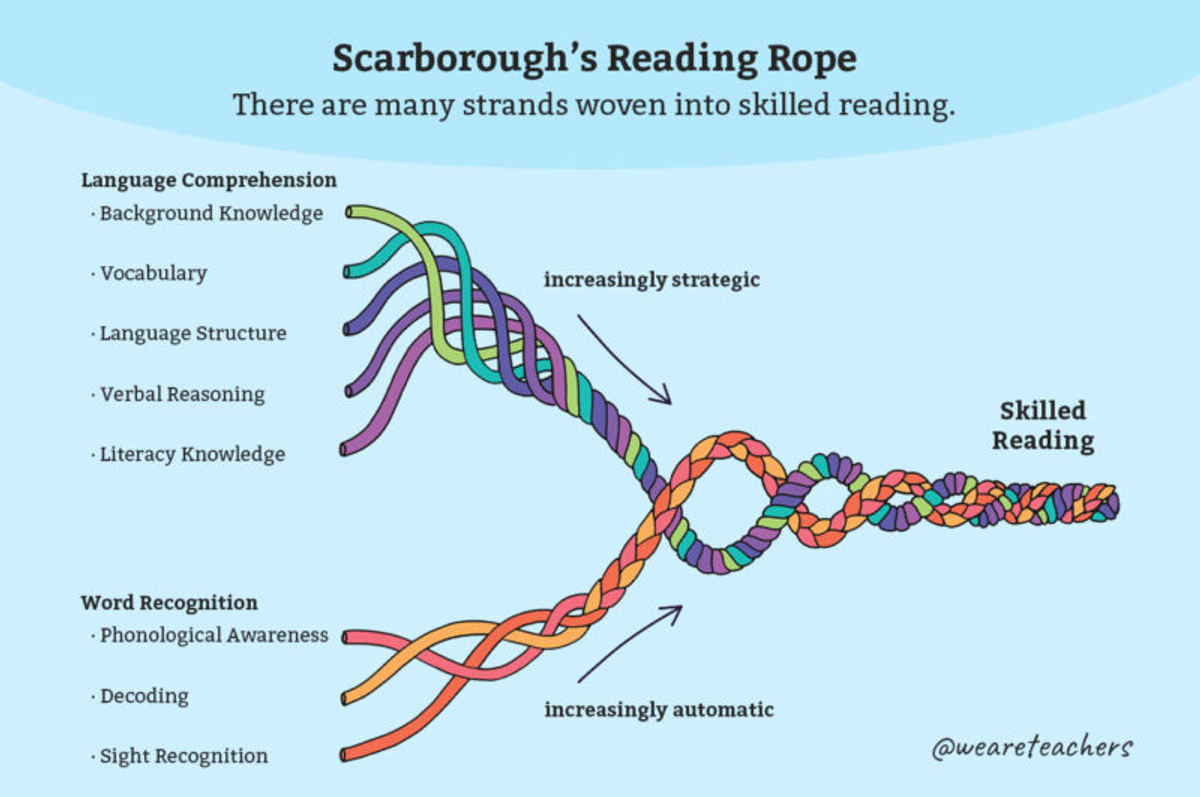Literacy and Numeracy News
BE INVOLVED, BE CONNECTED

Literacy and Numeracy News
BE INVOLVED, BE CONNECTED
VOCABULARY


In Scarborough’s Reading Rope, the Vocabulary strand refers to the quantity and quality of a student’s known words. To comprehend challenging texts, students need a wealth of vocabulary knowledge. Simply put, when students know more words, they can comprehend more of what they read.
Vocabulary is a core factor that contributes to a child’s overall literacy and reading competency, both of which help children thrive academically, socially, and emotionally. The richer a person’s vocabulary, the richer his or her thinking. We will only be able to communicate what our vocabulary allows. Therefore, if our vocabulary is limited, our communication will be limited as well. This is why vocabulary is one of the eight fundamental strands of Scarborough’s reading rope, and therefore an integral part of the landscape of any student’s reading development.
Why is Vocabulary Instruction So Important?
It is important to equip students with a wide vocabulary for a variety of reasons. First and most importantly, the more words a student knows, the better they’ll be able to communicate with others. They’ll be able to better understand what others say and hold their own in a conversation.
How is vocabulary and reading linked?
Vocabulary plays an important role in word recognition. A student is more likely to be able to read a word if they find a match between the word on the page and a word they have learnt through listening and speaking. This also supports them to read related words.
Vocabulary is also the key to reading comprehension. Readers cannot understand what they are reading without knowing what most of the words mean. Another important reason to build students’ vocabulary is that it allows them to access higher-level texts. As children learn to read more advanced texts, they must learn the meaning of new words that are not part of their oral vocabulary. A measure of whether a book is appropriate for a student is how many words they can’t pronounce and/or define. Therefore, the more words a student knows, the more text they will be able to read, and in turn, comprehend.
How can you assist in building your child’s vocabulary?
Talking to and reading with your child are two terrific ways to help them hear and read new words. Conversations and questions about interesting words (“The book says, ‘The boy tumbled down the hill,’ and look at the picture! How do you think he went down the hill?”) are easy, non-threatening ways to get new words into everyday talk.
Sharing a new word with your child doesn’t have to take a long time: just a few minutes to talk about the word and then focus back on the book or conversation. Choose which words to talk about carefully — choosing every new word might make reading seem like a chore. The best words to explore with your child are ones that are common among adult speakers but are less common to see in the books your child might read.
When introducing new words to your young learner, keep the following four helpful hints in mind:
1. Provide a simple, kid-friendly definition for the new word: Enormous means that something is really, really big.
2. Provide a simple, kid-friendly example that makes sense within their daily life: Remember that really big watermelon we got at the grocery store? That was an enormous watermelon!
3. Encourage your child to develop their own example: What enormous thing can you think of? Can you think of something really big that you saw today? That’s right! The bulldozer near the park was enormous! Those tires were huge.
4. Keep your new words active within your house. Over the next few days and weeks, take advantage of opportunities to use each new vocabulary word in conversation.
Take the time to share new words and build your child’s vocabulary. You’ll be enormously glad you did!
Kind regards,
Johanne Abbott
Learning Specialist- 5/6 Teacher